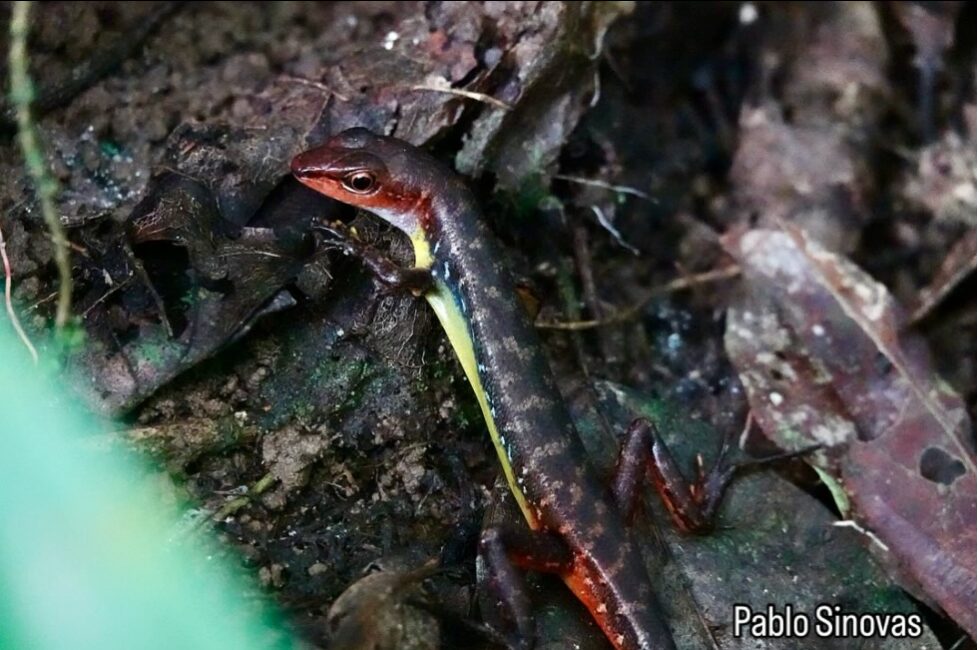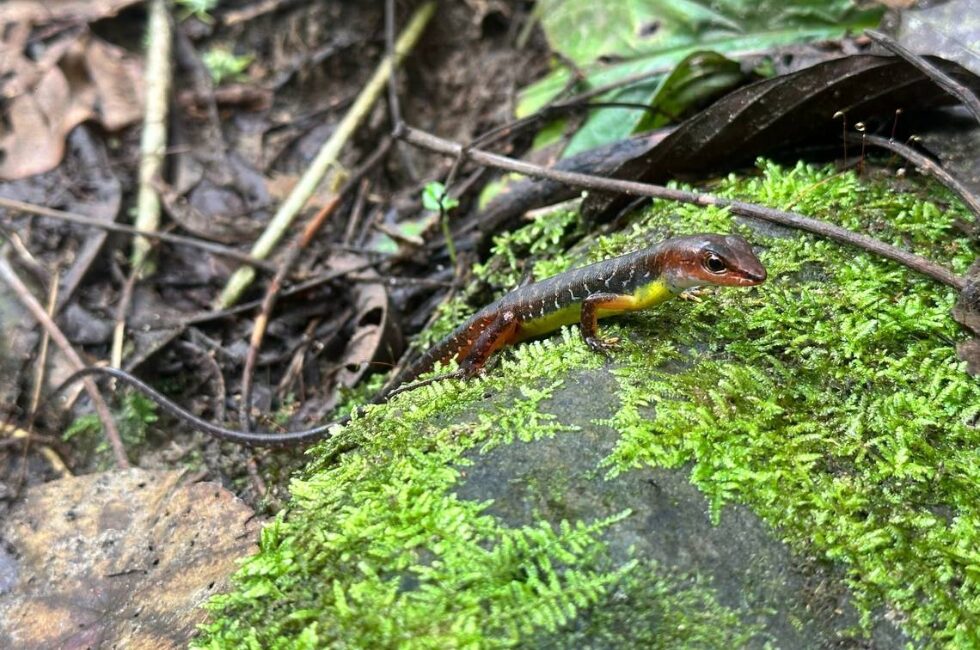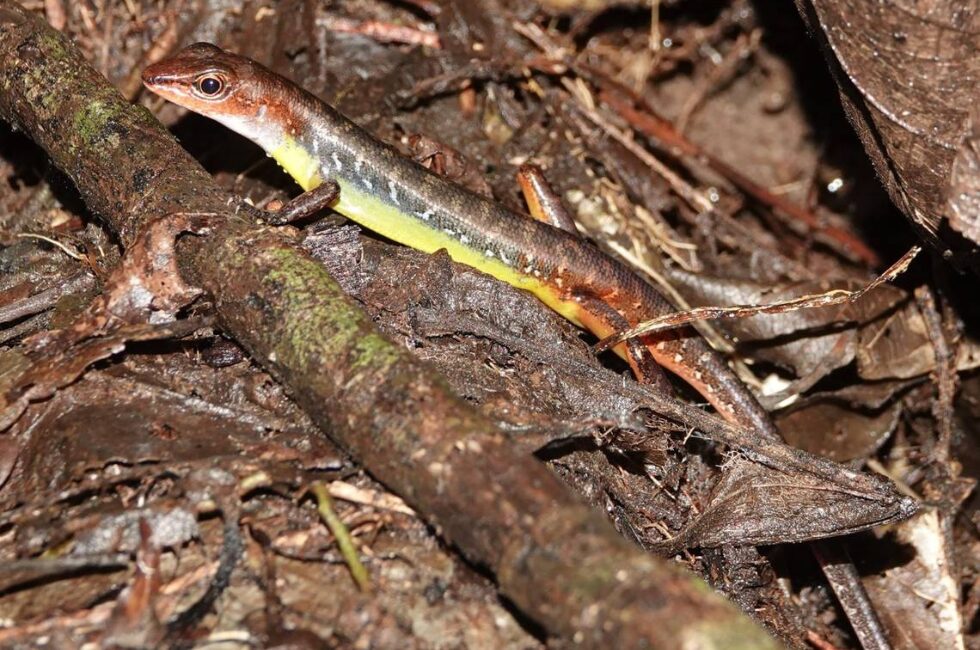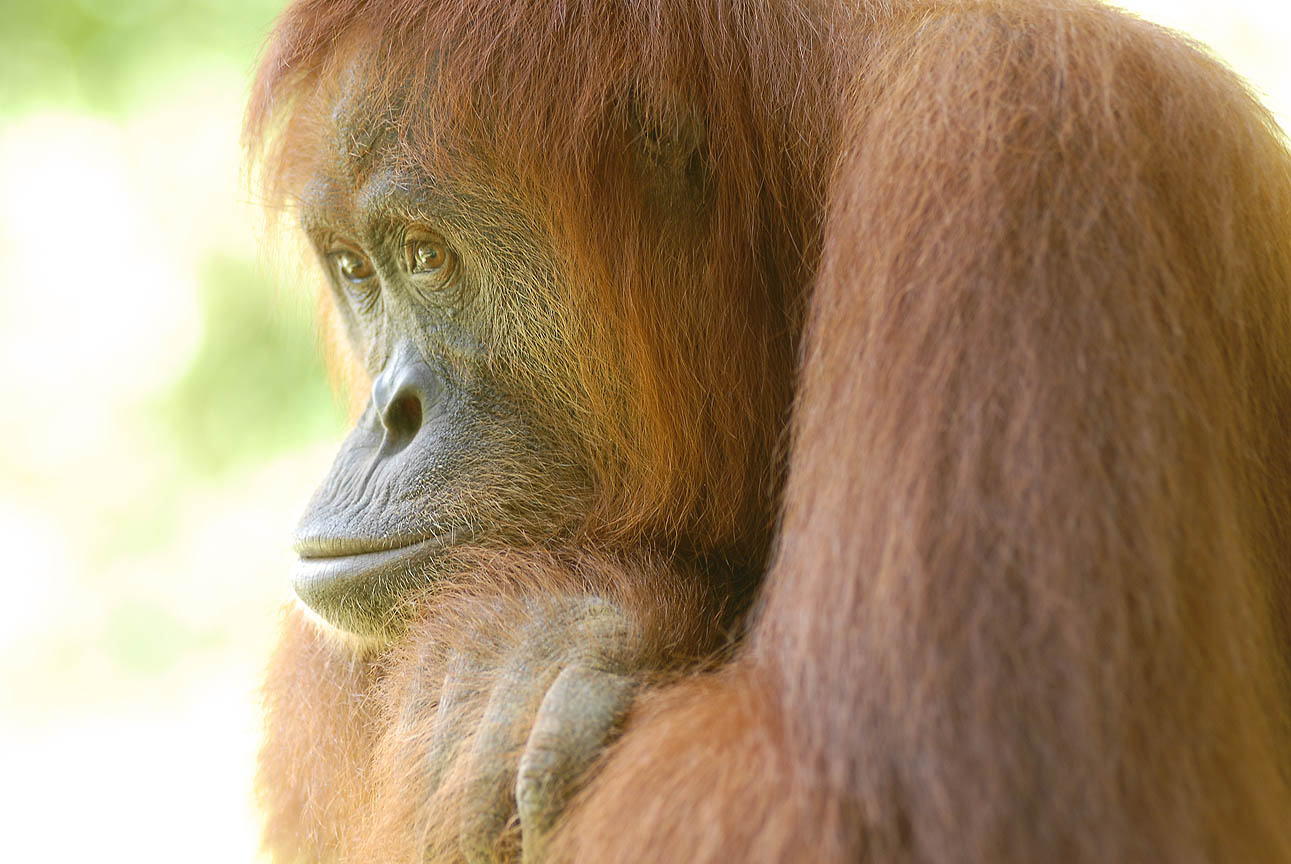
Pablo Sinovas, a conservation biologist, was stopped in his tracks during a trek in Gunung Leuser National Park, in North Sumatra. Pablo had spotted an “unfamiliar but strikingly beautiful” reptile basking in the dappled sunlight filtering through the dense rainforest canopy. The creature flicked its pale, forked tongue as Sinovas observed its vibrant lemon-yellow and rust-orange markings. He photographed the creature, noting its unusually long toe.
Little did he know, Pablo had photographed the long-toed forest skink – one of the world’s most mysterious reptiles. Known only from dead specimens recorded in 1915, and an outdated description from 1890, there had been no mention of the reptile for over a century.
Following conversations with locals who shared anecdotal information about the species, Pablo forwarded the photographs to Dr. Lee Grismer, a leading herpetologist from La Sierra University, who confirmed its identity.

This remarkable rediscovery underscores the critical role of protected areas like Gunung Leuser National Park in preserving our planet’s biodiversity. This is an important reminder that North Sumatra’s rainforests are vital habitat not only for orangutans but also for a wealth of other rare and vulnerable species.
However, protected areas can only go so far in conserving these amazing creatures. Studies have shown that designating tropical forests as protected areas does not guarantee their safety, as many species do not stay confined within the boundaries of these designated zones.
Orangutans, tigers, and so many other species roam across wider landscapes in search of food, mates, and shelter. In this instance, the skink was observed near the park boundary, around a mile upstream from the village of Bukit Lawang, a tourism hub on the edge of the national park.
This means that the areas surrounding protected forests are just as vital to conservation efforts. If we can protect forest corridors, we will enable orangutans and other wildlife to move freely through the landscape, to maintain genetic diversity, viability and resilience, and secure their long-term survival. These buffer zones must be managed in ways that support wildlife movement and the wellbeing of local people.

Orangutans, as a keystone species, play a crucial role in their ecosystem. They build nests which create light-filled gaps in the canopy. This encourages the growth of young plants and provides sun-exposed spots for terrestrial species, like the long-toed forest skink.
By eating over 500 plant species, orangutans are crucial seed dispersers, supporting forest regeneration. They prune branches as they feed, stimulating new growth and maintaining forest health. So, by protecting orangutans as a flagship species, we protect the entire, vibrant ecosystem!
Building conservation models that provide lasting benefits to local communities offers the greatest hope for protecting wild orangutans. We focus on protecting, connecting, and rewilding Sumatra’s rainforests to ensure a flourishing future for orangutans – as well as the biodiversity and forest-edge communities that coexist alongside them.
With thanks to Pablo Sinovas for granting permission to share these images.
Sign up to our newsletter to receive the latest conservation news directly to your inbox. Cute orangutan pictures are also guaranteed!
You can help protect Sumatra's Orangutans. Click to get updates
